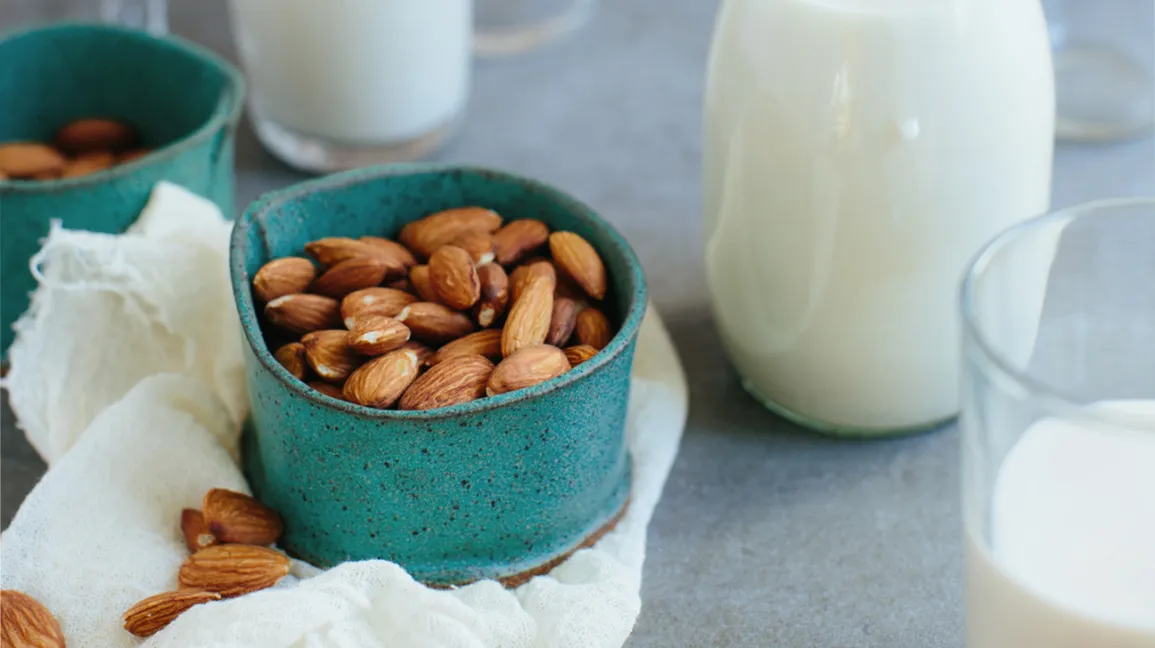Health
Top 9 Best Workout And Nutrition Programs:

There are Top 9 Best workout and nutrition programs available, and the best one for you will depend on your fitness goals, preferences, and health status. However, here are some popular and effective programs:
- The 5×5 Program – A strength training program that focuses on compound exercises and progressive overload.
- High-Intensity Interval Training (HIIT) – A cardio-based workout that alternates high-intensity bursts with short rest periods.
- The Mediterranean Diet – A plant-based diet that emphasizes whole grains, vegetables, fruits, and healthy fats.
- The Atkins Diet – A low-carbohydrate diet that promotes weight loss by reducing carbohydrate intake and increasing protein and fat intake.
- The Paleo Diet – A diet that mimics the eating habits of our hunter-gatherer ancestors and emphasizes whole, unprocessed foods.
- The DASH Diet – A diet that is low in sodium and emphasizes fruits, vegetables, and low-fat dairy products.
- Yoga – A mind-body practice that combines physical postures, breathing techniques, and meditation to promote relaxation and flexibility.
- CrossFit – A high-intensity workout program that combines weightlifting, cardio, and gymnastics.
- The Zone Diet – A diet that promotes a balance of carbohydrates, protein, and fat in each meal to regulate insulin levels and promote weight loss.
It’s important to remember that the best program is one that you can stick to and enjoy. Consult with a healthcare provider or a certified fitness professional before starting any new workout or nutrition program.
The program typically includes three workouts per week, alternating between two different workouts. Each workout includes the following exercises:
- Squats – works the legs, glutes, and core muscles
- Bench Press – works the chest, triceps, and shoulders
- Barbell Rows – works the back muscles, biceps, and forearms
- Overhead Press – works the shoulders, triceps, and upper chest
- Deadlifts – works the legs, glutes, back muscles, and grip strength
The 5×5 program is designed to help build strength and muscle mass through progressive overload, which means gradually increasing the weight lifted over time. It is recommended for intermediate to advanced lifters who have some experience with weightlifting and proper form. Beginners may benefit from starting with a simpler program to build a solid foundation before moving on to the 5×5 program.
It’s important to consult with a healthcare provider or a certified fitness professional before starting any new workout program, especially if you have any pre-existing medical conditions or injuries. Proper form and technique are crucial to prevent injury and maximize the benefits of the program.
High-Intensity Interval Training (HIIT)
The benefits of HIIT workouts include:
- Increased calorie burn: HIIT workouts can burn more calories in a shorter period of time compared to steady-state cardio exercises.
- Improved cardiovascular health: HIIT workouts can improve cardiovascular function, including lower blood pressure, improved cholesterol levels, and increased aerobic capacity.
- Increased fat loss: HIIT workouts can help reduce body fat while preserving muscle mass.
- Time-efficient: HIIT workouts can be completed in a shorter amount of time than traditional cardio workouts.
- Increased metabolism: HIIT workouts can lead to an afterburn effect, where the body continues to burn calories for hours after the workout is completed.
It’s important to consult with a healthcare provider or a certified fitness professional before starting any new exercise program, especially if you have any pre-existing medical conditions or injuries. Proper form and technique are crucial to prevent injury and maximize the benefits of the program.
The Mediterranean Diet:
The Mediterranean diet has been associated with a range of health benefits, including:
- Reduced risk of heart disease: The Mediterranean diet is rich in heart-healthy nutrients, including omega-3 fatty acids, fiber, and antioxidants, which can help reduce the risk of heart disease.
- Improved weight management: The Mediterranean diet emphasizes whole, nutrient-dense foods that are low in calories, which can help with weight loss and weight management.
- Reduced risk of certain cancers: The Mediterranean diet has been linked to a reduced risk of certain types of cancer, including breast and colon cancer.
- Improved cognitive function: The Mediterranean diet has been associated with improved cognitive function and a reduced risk of dementia and Alzheimer’s disease.
- Reduced risk of type 2 diabetes: The Mediterranean diet is rich in fiber and low in processed foods and added sugars, which can help regulate blood sugar levels and reduce the risk of type 2 diabetes.
It’s important to note that the Mediterranean diet is not a one-size-fits-all approach to nutrition, and individual dietary needs may vary. Consult with a healthcare provider or a registered dietitian before making any significant changes to your diet.
The Atkins Diet:
Phase 1: Induction Phase – This phase lasts for two weeks and limits carbohydrate intake to 20-25 grams per day. The main focus of this phase is to switch the body into a state of ketosis, where it burns fat for energy instead of carbohydrates.
Phase 2: Balancing Phase – During this phase, carbohydrate intake is gradually increased to 25-50 grams per day. The focus is on finding the individual’s “critical carbohydrate level” where weight loss still occurs but the individual can still eat a wider range of foods.
Phase 3: Fine-tuning Phase – This phase begins once the individual is within 10 pounds of their goal weight. Carbohydrate intake is increased to 50-80 grams per day, with the focus on finding the individual’s personal carbohydrate tolerance level.
Phase 4: Maintenance Phase – This phase is designed to be a lifelong approach to eating, with a focus on maintaining weight loss and good health by following a low-carbohydrate, healthy fat diet.
The Atkins diet has been associated with weight loss, improved blood sugar control, and improved cholesterol levels in some studies. However, there are potential risks associated with a high-fat diet, including an increased risk of heart disease, liver problems, and nutrient deficiencies.
It’s important to consult with a healthcare provider or a registered dietitian before starting any new diet program, especially if you have any pre-existing medical conditions or are taking any medications. The Atkins diet may not be appropriate for everyone, and there may be more balanced approaches to weight loss and health improvement.
The Paleo Diet:
The main principle behind the Paleo diet is that modern diets have deviated from the foods that our bodies evolved to eat, which has led to a range of health problems. By eliminating processed foods and focusing on whole, nutrient-dense foods, the Paleo diet aims to improve health and reduce the risk of chronic diseases.
The potential benefits of the Paleo diet include:
- Improved nutrient intake: The Paleo diet is rich in nutrient-dense foods, including fruits, vegetables, and meats, which can improve nutrient intake and support overall health.
- Reduced inflammation: The Paleo diet excludes processed foods and grains, which are known to be pro-inflammatory. By reducing inflammation, the Paleo diet may reduce the risk of chronic diseases.
- Improved blood sugar control: The Paleo diet emphasizes whole, unprocessed foods, which can help regulate blood sugar levels and reduce the risk of type 2 diabetes.
- Potential weight loss: By eliminating processed foods and emphasizing whole, nutrient-dense foods, the Paleo diet may promote weight loss and improve body composition.
However, it’s important to note that the Paleo diet is a relatively new concept and there is limited research on its long-term effects on health. Additionally, the strict elimination of certain foods, such as grains and legumes, may lead to nutrient deficiencies if not properly planned. It’s important to consult with a healthcare provider or a registered dietitian before starting any new diet program, especially if you have any pre-existing medical conditions or are taking any medications.
The DASH Diet:
The DASH diet is based on research that shows that a diet rich in fruits, vegetables, and low-fat dairy products can lower blood pressure and reduce the risk of heart disease. The diet is also designed to be flexible, allowing individuals to tailor it to their individual dietary needs and preferences.
The main principles of the DASH diet include:
- Eating a variety of whole, nutrient-dense foods: The DASH diet emphasizes fruits, vegetables, whole grains, lean protein, and low-fat dairy products, which are rich in nutrients that support overall health.
- Limiting sodium intake: The DASH diet recommends limiting sodium intake to 2,300 milligrams per day, or 1,500 milligrams per day for individuals with high blood pressure.
- Eating foods that are rich in potassium, magnesium, and calcium: These minerals have been shown to help lower blood pressure and improve overall heart health.
- Limiting foods that are high in saturated fat and added sugars: These foods have been linked to an increased risk of heart disease.
The DASH diet has been shown to lower blood pressure and improve overall heart health in numerous studies. It is also a flexible and balanced approach to eating, making it a sustainable option for many individuals.
It’s important to note that the DASH diet is not a one-size-fits-all approach to nutrition, and individual dietary needs may vary. Consult with a healthcare provider or a registered dietitian before making any significant changes to your diet.
Yoga:
There are many different styles of yoga, each with its own unique focus and approach. Some of the most popular styles of yoga include:
- Hatha yoga: A gentle form of yoga that focuses on basic postures and breathing exercises.
- Vinyasa yoga: A more dynamic form of yoga that focuses on flowing movements that are synchronized with the breath.
- Ashtanga yoga: A more intense form of yoga that involves a set sequence of postures that are performed in a specific order.
- Bikram yoga: A form of yoga that is performed in a heated room, with a set sequence of 26 postures.
- Yin yoga: A gentle form of yoga that involves holding passive postures for several minutes, with a focus on relaxation and flexibility.
The benefits of yoga are numerous and have been supported by scientific research. Some of the potential benefits of regular yoga practice include:
- Reduced stress and anxiety: Yoga has been shown to reduce levels of the stress hormone cortisol, which can help reduce feelings of anxiety and promote relaxation.
- Improved flexibility and balance: The physical postures of yoga can help improve flexibility, balance, and posture.
- Enhanced strength and endurance: Some styles of yoga, such as vinyasa and ashtanga, can be quite physically demanding and can help improve strength and endurance.
- Improved cardiovascular health: Regular yoga practice has been shown to lower blood pressure and reduce the risk of heart disease.
- Improved mental health: Yoga has been shown to improve mood, reduce symptoms of depression, and enhance overall wellbeing.
Overall, yoga is a safe and effective way to improve physical and mental health and can be practiced by individuals of all ages and fitness levels. It’s important to find a style of yoga that works for you and to practice under the guidance of a qualified teacher.
CrossFit:
CrossFit workouts typically involve a combination of exercises performed in a circuit or in a timed format. Workouts can include activities such as weightlifting, running, rowing, jumping, and bodyweight exercises like push-ups and pull-ups. CrossFit workouts are usually intense and challenging, and are designed to push participants to their limits.
One of the key principles of CrossFit is the concept of “constantly varied, high-intensity, functional movement.” This means that workouts are designed to be different every day, and to include movements that mimic real-life activities and improve overall functional fitness.
While CrossFit has gained popularity in recent years, it is not without controversy. Critics argue that the intense nature of CrossFit workouts can increase the risk of injury, particularly for beginners or individuals with pre-existing health conditions. Others have raised concerns about the focus on competition and the potential for overtraining.
Despite these concerns, many individuals have found success with CrossFit and have seen improvements in their overall fitness and health. As with any exercise program, it’s important to start slowly and work with a qualified trainer or coach to ensure proper form and technique, and to avoid injury.
The Zone Diet:
In the Zone Diet, each meal is composed of a specific ratio of macronutrients: 40% carbohydrates, 30% protein, and 30% fat. This balance is designed to keep blood sugar levels stable and prevent hunger and cravings. The diet also emphasizes the importance of eating lean proteins, healthy fats, and low-glycemic carbohydrates.
The Zone Diet has been praised for its emphasis on whole, unprocessed foods and its focus on balanced nutrition. However, critics have raised concerns about the restrictive nature of the diet and the potential for nutrient deficiencies, particularly if followed for a long period of time.
While there is some evidence to suggest that the Zone Diet may be effective for weight loss and improving markers of cardiovascular health, more research is needed to fully understand its long-term effects on health and sustainability. As with any diet, it’s important to talk to a healthcare provider or registered dietitian before making significant changes to your diet.
How Useful These Best Workout And Nutrition Programs:
- Establishing a structured plan: Best Workout and nutrition programs can provide a clear roadmap for achieving specific goals, whether it’s losing weight, building muscle, or improving overall fitness.
- Improving overall health: Regular exercise and a balanced diet are essential for maintaining good health and preventing chronic diseases such as heart disease, diabetes, and obesity.
- Providing accountability and motivation: Following a workout and nutrition program can help individuals stay accountable and motivated to achieve their goals.
- Improving performance: Targeted exercise and nutrition can help individuals improve their athletic performance, whether it’s increasing strength, speed, or endurance.
- Customizing for individual needs: Many workout and nutrition programs can be tailored to individual needs, taking into account factors such as age, fitness level, and specific health conditions.
Overall, workout and nutrition programs can be a useful tool for achieving specific health and fitness goals. However, it’s important to approach these programs with a critical eye and to make sure that they are safe, effective, and tailored to individual needs. It’s always a good idea to consult with a healthcare provider or qualified fitness and nutrition professional before starting any new program.
Conclusion:
Health
Benefits of almond milk for weight loss

Discover the benefits of almond milk for weight loss.
We can take advantage of the contribution of healthy fats, amino acids, and fiber from almond milk to lose weight and take care of our general health, since it also has cardiovascular and bone benefits.
Many people have started consuming almond milk to lose weight. Although it is a drink with a high caloric intake compared to other non-dairy milk, its contributions of fiber, amino acids, and healthy fats make it a great option for the diet.
On the other hand, it is a food free of lactose and gluten, and its cholesterol concentration is almost zero. In addition, it is an interesting contribution of calcium, which makes it also suitable for caring for bones. What other benefits does it provide? How do you prepare?
Due to the boom, it has had among Hollywood celebrities, it can now be purchased in commercial presentations. However, its natural preparation is still recommended, since it is the best way to preserve all its properties and avoid chemical additives.
Benefits of almond milk for weight loss
Almond milk has become popular throughout the world as one of the best substitutes for cow’s milk, according to this study from the San Paolo Hospital in Milan, although it is advisable to administer it together with other compounds in the case of babies. It is not only recommended for those who are lactose intolerant and followers of the vegan diet, but also for those who want to take care of their weight and health.
From a nutritional point of view, it stands out for its contribution of omega 3 fatty acids, a type of healthy fat that protects the health of the heart. This nutrient lowers the concentration of cholesterol in the arteries and contributes to proper metabolic function. This is suggested by this research from the University of Chile.
It also makes a light contribution of complex carbohydrates, a macronutrient that helps to have an optimal level of energy. Its slow assimilation keeps the metabolism active and prevents high spikes in blood glucose.
Due to its calcium and magnesium content, its regular consumption also strengthens the bones. Although its contributions are not as high as those of cow’s milk, they are significant to obtaining the body’s requirements.
Another important reason to drink almond milk for weight loss is its amino acid content. As some know, these nutrients are key to losing weight and increasing muscle mass. Its adequate assimilation improves sports performance and reduces the risk of injuries.
How to prepare almond milk to lose weight?
The preparation of almond milk to lose weight does not take too much time and is quite simple. In addition, it is healthier than buying milk that is sold on the market, as it does not contain preservatives or chemical additives.
Ingredients
•1 cup of natural almonds, not roasted (150 g)
•6 cups of water (1.5 liters)
Preparation
•First, soak the almonds in two cups of water (500 ml).
•Let them sit for at least 8 hours, or overnight.
•After this time, discard the soaking water and put the almonds in the blender.
•Add the remaining cups of water and process for a few minutes.
•After obtaining a white and foamy drink, proceed to strain it.
•Use a cloth strainer for best results. Squeeze the milk well and store it in a glass jar with a lid.
Note: Optionally you can add a little cinnamon and honey.
Consumption mode
Have a cup of almond milk at breakfast or during snacks.
If you prefer, use it as a base to prepare your smoothies with fruits and vegetables.
Try to moderate its consumption, since in excess it can add many calories.
How to use leftover almonds?
After straining the almond milk you will be left with fine flour that can be reused. It’s a great option for another healthy diet recipe. However, to store it, you will have to do another process.
Instructions
•Preheat the oven to 350ºF (about 180ºC).
•Meanwhile, spread the almond flour on a tray.
•Put it in the oven and leave it for 15 minutes, until it is very dry.
•Use this flour to replace refined flour when making cookies, bread, or any dessert.
•Did you know? 6 consequences you can suffer from eating refined flour
Contraindications of almond milk
Although almond milk for weight loss provides many benefits, its contraindications should not be overlooked. In case of metabolic disorders, pregnancy, or specific diseases, it is better to consult a doctor before consumption.
•Drinking almond milk in excess can hinder the absorption of iodine.
•It contains substances that can irritate the thyroid gland, causing inflammation.
•It is not recommended for babies.
•Ingested in large quantities, it can trigger migraine attacks due to its tyrosine content.
In summary, preparing almond milk to lose weight has important benefits. However, some special cases must be considered so that its intake is not counterproductive.
Health
20 benefits of Mucuna Pruriens and side effects

Table of Contents
Discover the 20 health benefits of Mucuna Pruriens and side effects.
Mucuna Pruriens , known as velvet bean, is a plant of the legume family.
The original habitat of Mucuna Pruriens extends throughout the tropics on all continents, beginning with Africa, the Caribbean islands, northern Australia, India, Southeast Asia (including Indonesia), and the Pacific islands.
Mucuna Pruriens is a seasonal legume that grows to spread.
This plant can be used for human and animal food (forage and seeds) and environmental services.
The young leaves, pods, and seeds can give some benefits, especially for food ingredients like Tempe which originally comes from Indonesia and is made by fermenting boiled seed paste.
Nutrition facts of Mucuna Pruriens
The nutrients contained in Mucuna pruriens are:
• Energy 32 Kcal
• Protein 24 g
• Fat 3 g
• Carbohydrates 55 g
• Calcium 130 mg
• Phosphorous 200 mg
• Zinc 2 mg
• Vitamin A 70 IU
• Vitamin B1 0.3 g
• Vitamin C 0 mg
20 health benefits of Mucuna pruriens
Of the nutrients above, here are the health benefits of mucuna pruriens:
1.- Benefits of Mucuna Pruriens for cholesterol
According to various scientific studies carried out, the results show that mucuna pruriens has saponin content.
This saponin serves to lower cholesterol levels in the body.
This content binds to bile acids and causes bound cholesterol. So this plant is often called an anti-cholesterol plant.
2.- It works as an antioxidant body
Too much oxidation with the skin can cause free radicals.
Therefore, it is necessary to get as many antioxidants as possible that are useful to prevent the appearance of free radicals.
Mucuna pruriens is also one of the plants that contain flavonoids that produce antioxidants or antioxidants.
3.- Prevents skin aging
The flavonoid content in Mucuna Pruriens is also helpful in preventing premature aging.
Self-aging can occur because the skin is often exposed to air pollution and direct sunlight.
The flavonoid will lift the dull skin and regenerate the dead skin from these problems.
In addition, the flavonoid also protects and maintains the health of the skin.
4.- Avoid allergies
According to the study, after consuming or using Mucuna Pruriens, the body will respond to things that can cause the allergy to be rejected.
So that the body becomes comfortable with the disturbance that surrounds it.
The smell and taste of this plant are also not too strong which can often cause allergies.
5.-Benefits of Mucuna Pruriens for diarrhea
Eating foods and drinks that contain flavonoids like mucuna pruriens is also beneficial for the digestive system.
The benefit is preventing the body from lacking fluids that can cause diarrhea.
This disease is often infected, especially in children.
6.- Increased libido (aphrodisiac)
Inside mucuna pruriens, there is a substance called levodopa and it gives some good effects as an aphrodisiac.
It can increase libido, which can be interpreted as an increase in a person’s sexual desire.
This can happen to both men and women.
According to some studies, especially in Brazil, people use the leaves of this plant to increase male sexual desire and it shows some great results.
7.- Protein producer and energy source
The mucuna pruriens that we already know from above can be used as one of the raw materials of Tempe.
It is also beneficial as a source of protein substitutes apart from the more expensive meats and contains other substances.
Mucuna pruriens serve as an essential nutrient in the body.
This plant contains epinephrine (adrenaline) and norepinephrine that give some effects that can increase energy and focus. It is the same result as a dose of caffeine.
Therefore, consuming it will increase the body’s energy inactivity.
Also, the body will feel full for a long time, and it will make the body feel more energetic.
8.- Heals minor wounds
The sap from the stem of the mucuna pruriens plant is beneficial in treating minor external ulcers.
It is because the content in the stem can heal these minor wounds, such as torn, stabbed, cut, scratched, or lightly burned wounds.
9.- Relieves Parkinson’s disease
Parkinson’s disease is a gradual degeneration of nerve cells in the center of the brain that regulate body movement.
Parkinson’s itself can also lead to other serious illnesses, especially psychiatric problems.
L-dopa contained in the seed of mucuna pruriens is a precursor of dopamine and improves the level of dopamine in the brain.
However, L-dopa is not the only substance responsible for use in the prevention of Parkinson’s disease.
In addition, there are other substances in the seeds that can act as neuroprotectors and reduce the symptoms of Parkinson’s disease.
10.- Helps reduce stress
Feelings of stress can be fatal to the body. This is because if a person is depressed, they will tend to perform actions that are beyond the control of their mind.
Also, it can affect others because that person will try to blame others, get angry easily, and most dangerously, that person can also hurt others to get rid of stress.
Fortunately, the consumption of mucuna pruriens can refresh the mind to be calmer due to the fragrant smell and taste.
11.- Benefits of Mucuna Pruriens for diabetes
Mucuna pruriens contains proteins and some vitamins that are useful in the fight against hypertension.
The study was carried out in mice and concluded that blood sugar levels were lowered by 21.89% in four weeks.
The result of this can also be used by humans. We already know that proteins can maintain blood sugar levels and that vitamins contain antioxidants and pure sugar that do not increase blood sugar levels.
12.- Increases the immune system
Within the mucuna pruriens, there are phosphorus and calcium substances that increase resistance and white blood cells.
According to 1996 research at the University of Arkansas, phosphorus deficiency is often associated with vitamin D and calcium deficiency.
These nutritional deficiencies can enhance the autoimmune disorder.
13.- Helps maintain the nervous system
The content of vitamin B1, phosphorus, and iron in Mucuna pruriens is very important to keep the nervous system working properly.
Phosphorus is one of the important minerals in the body. Phosphorus directly maintains normal neural activity.
While iron plays a role in red blood cell regulation, it remains awake, so the nerve can work optimally.
14.- It can substitute Viagra for the reproductive system
Popular research claims that couples who have healthy and active sex lives are relatively happier and even live longer.
But this can be problematic if the man has erectile dysfunction.
Viagra is the most popular pill for increasing sexual desire/libido in men and it also helps with erectile dysfunction.
People of all ages use these blue pills which hurt health.
Therefore, the consumption of mucuna pruriens becomes a more natural substitute for viagra.
In addition, it is good for normal fertility, healthy sperm and eggs, proper functioning of the reproductive organs, and proper genital secretions.
Here are more health benefits of Mucuna Pruriens.
15.- Good for diet and losing weight
16.- Protect the heart
17.- Circulate the blood flow
18.- Fight against cancer
19.- Good for pregnant women
20.- Make the digestion system work smoothly
Side effects of mucuna pruriens
Contains hydrocyanic acid
Mucuna pruriens contains acid cyanide poison (HCN), especially in the seeds.
This is what reduces the interest in consuming this plant.
One way to eliminate it is by soaking the beans in the water for 1 day, with every 6 hours to replace the water.
This experiment has been done many times and the result is very good but it is too complicated for people who always want an instant path.
It can cause vomiting, headaches, and poor sleep
We should not consume too much mucuna pruriens because it can cause some problems such as vomiting, headaches, and insomnia.
These are all the health benefits of mucuna pruriens.
However, there are some side effects if we eat or use too much. Stay healthy and good luck.
Health
3 Benefits Of Lemon On The Face That Will Beautify You

Discover the 3 Benefits Of Lemon On The Face That Will Beautify You.
The benefits of lemon on the face are many since it is a perfect ally in the cure of conditions such as acne, blemishes; Lemon on the face gives our skin a special shine, in addition to being a very easy and inexpensive facial treatment, which we can access without any problems.
Lemon is a fruit that is rich in vitamins C, an antioxidant that helps prevent the appearance of threatening expression lines, and it is about the great benefits of lemon on the face and that way you can have the face of a model magazine, so we invite you to continue reading this interesting post.
3 Benefits of lemon on the face that will make you look like a magazine model.
As we mentioned earlier and in other articles, which we invite you to read, is that lemon is considered a great source of vitamin C, this vitamin is a powerful antioxidant that can help you reduce the appearance of fine lines, which are without a doubt our sworn enemies.
The vitamin C found in lemon is capable of stimulating the production of collagen, another of the benefits of lemon on the face is that it helps to heal the tissues.
For this reason, the skin repairs itself and protects itself from free radicals, which are not only the cause of premature aging but also the development of degenerative diseases.
One of the properties of vitamin C that is present in lemon inhibits the production of melanin, which is why the skin can be noticed with a more uniform tone.
The citric acid found in lemon acts as a gentle exfoliator to remove dead cells and give your skin a healthier appearance.
Lemon juice has a slightly sour taste, so it can cause temporary skin irritation; so people who have sensitive skin should dilute it in a little water, if you notice that it burns a lot, the idea is to rinse it immediately.
1.- Skin whitening.
If you want to even out skin tone, lemon juice on the face can be applied externally at least once a day, for best results fresh lemon juice should be used if they are organic much better.
You can dilute lemon juice in water or green tea, with the latter enhancing its antioxidant power in unimaginable ways; As the skin gets used to the power of the lemon, you can increase the concentration of the juice.
You will notice how the spots on your skin gradually diminish, with the regular use of this remedy you may notice changes in a month to six months, depending on how stained your face is.
2.- Eliminate excess fat.
An oily face will never look quite right, the places where it accumulates the most are the forehead, chin, and around the nose.
To hide those greasy areas you can wet a cotton ball with the juice of half a lemon and gently clean the affected areas, it is important that you avoid the use of lemon in the area near the eyes, on wounds, or skin rashes.
3.- The open pores.
If you want to reduce the size of the pores on your face, one of the benefits of lemon on the face is an easy and very inexpensive remedy, it can be applied in the same way as it is used to remove fat from the face.
Important note.
It is important to clarify that you should avoid exposure to the sun when you have placed lemon on your face; Since this makes the skin more vulnerable to the sun’s rays, which has the consequence that the skin becomes stained.
For this reason, it is recommended that any of the lemon-based remedies you use for your skin be done at night, and you should wash your face the next morning very well before going out.
Other uses of lemon on the face
• The lemon peels are an excellent exfoliant, with these you can eliminate blackheads, in the same way, we can use the lemon along with the sugar.
• If you are looking for a nourishing mask you can do it with a tablespoon of lemon juice, along with one of honey and a few drops of almond oil, this is an excellent natural and very inexpensive anti-wrinkle cream.
• A mask for oily skin is one based on a beaten egg and a tablespoon of lemon juice, if your skin is dry you can do it with honey and olive oil, you will achieve a dream complexion.
• To lighten your skin you can take advantage of a tablespoon of lemon juice, cucumber, tomato, and sandalwood paste, use a tablespoon of each product and mix them very well; you put this mixture on your face for 15 minutes and then wash your face well.
• As always keep in mind that when applying lemon-based treatments, you should not expose yourself to the sun, so do them at night. It is time to enjoy the benefits of lemon on your face and have a model face.
Knowing the benefits of nature and technology can help us improve our health and the way we see life. If you want to know more about our topics, we invite you to continue reading our interesting posts and to follow us on our social networks
-

 Benefits5 months ago
Benefits5 months agoThe Benefits of Joining Gym Lumolog – Improve Your Fitness & Health
-

 Food1 year ago
Food1 year ago10 + Benefits of carrot juice and side effects
-

 Health1 year ago
Health1 year ago50 Super Healthy (And Very Often Cheap) Foods
-

 Health1 year ago
Health1 year ago5 Shocking health benefits of kinkeliba and side effects
-

 Health1 year ago
Health1 year ago15 health benefits of soursop leaves tea and side effects
-

 Food1 year ago
Food1 year ago8 shocking benefits of leek juice and side effects
-

 Health1 year ago
Health1 year ago15 Benefits of lipton tea and side effects
-

 Health1 year ago
Health1 year agoBenefits of guava leaves Sensually
